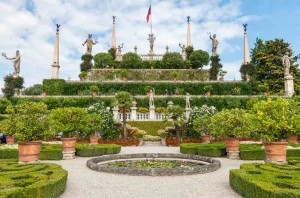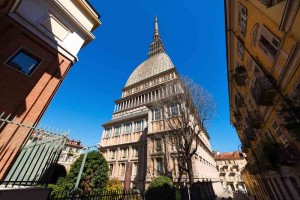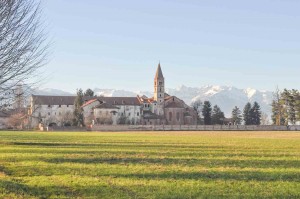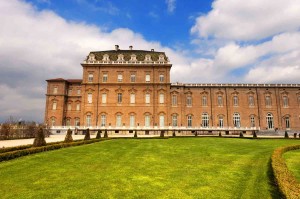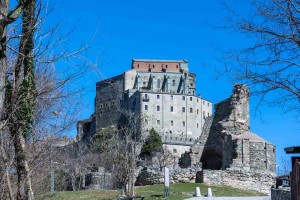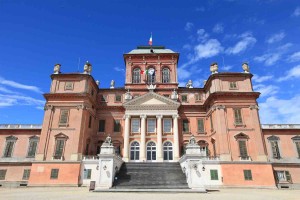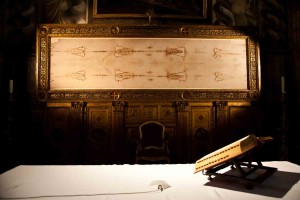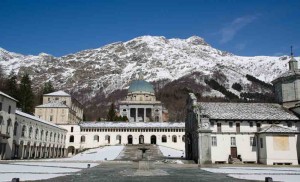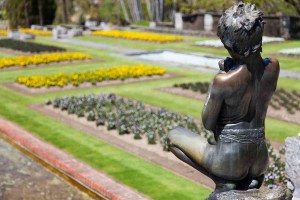After Sicily, Piedmont is Italy’s second-largest region. Its name derives from the Latin “ad pedem montium”, meaning “at the foot of the mountains”. Indeed, the alpine location has left an undeniable impact on the region with the capital Turin. It stands in sharp contrast to Po Valley, where the largest cities of north-western Italy are located. There’s a lot for you to discover between urban metropolises and quaint beauties of nature. ZAINOO has compiled a list with the 10 most impressive sights of Piedmont for you:
Isola Bella
The “beautiful island” is part of the Borromean Islands located about 400 metres from Stresa. It is widely regarded as one of the most delightful tourist attractions at Lago Maggiore. Count Carlo III Borromeo had the rocky crag levelled in 1632 in order to build a tremendous estate, Palazzo Borromeo, for his wife Isabella D’Adda. The palace is famous all around the world for its glorious terraced gardens that fascinated Caroline of Brunswick, who would become Queen of England, and Napoleon Bonaparte. A museum with shell grotto awaits you inside the palace.
Mole Antonelliana in Turin
When construction of Mole Antonelliana came to a conclusion in 1889, it was the second-highest accessible building in the world at the time, even outmatching the recently completed Cologne Cathedral. The 167.5 m high historicist eclectic brick structure has since become Turin’s landmark. You can use it as your point of orientation during city tours. Originally intended to be a synagogue, it now houses the National Museum of Cinema. If you have a head for heights, you should use the levitating glass elevator to reach the observation deck at a height of 85 m. On cloudless days you can even see the Alps!
Staffarda Abbey in Revello
In 1135 monks settled at the mouth of the Po River headwaters on land donated by Manfred I, Marquis of Saluzzo, which today belongs to the municipality of Revello. The erstwhile Cistercian abbey grants you deep insight into the Middle Ages. As the entire complex is in good repair, you can also visit numerous outbuildings today. Among the most imposing features of the church is the impressive arch of the nave with the impressive two-colour arcs.
Palace of Venaria
The Savoyard residence in the municipality Venaria Reale has been a World Heritage Site of the UNESCO ever since 1997. You can easily get lost on this vast site of timeless beauty. Dare to peek inside the palace and visit the 80-metre-long Grand Gallery. It stretches across the entire south wing and is adorned with stucco patterns. The Gallery grants you direct view of the palace park with an approximate area of 60 hectares. By the way, today’s natural park and zoo originally served as royal hunting grounds.
Sacra di San Michele in Val di Susa
Sacra di San Michele is located at the exit of Val di Susa at the French border. The castle-like “Sanctuary of Saint Michael” can be found on Monte Pirchiano in exposed position. Presumably, the mountain had already been populated by Ligurians and Celts in pre-Christian times before the Romans came along. The foundation for the abbey, which is currently managed by Rosminians, was probably laid in the second half of the 10th century. Once you’ve managed to reach the mountain, you’ll be amazed by this high-rising five-floor construction high above the craggy rock. Up until recent years, the 243-step Stairway of the Dead was actually lined by visible skeletons of dead monks!
Royal Castle of Racconigi
You will find another Savoyard residence that’s also a UNESCO World Heritage Site in the small town of Racconigi located approx. 40 km south of Turin. The estate had already been used as an abbey in the antiquity and around the year 1000, before the Savoyards decided to convert the brick building with its massive towers. The fairy-tale landscape parks date back to this time, too. Look out for, amongst other buildings, a Gothic chapel, a Russian dacha and a Doric Tempietto on an approximate area of 170 hectares. The gentle interaction of water and English landscape gardens will inspire you.
Turin Cathedral with the Holy Shroud
Year after year millions of tourists flock to Turin to visit the cathedral. The building dedicated to St John the Baptist was erected on the site of three ancient Christian churches before being expanded in mid-17th century in order to accommodate the centre of attraction for a plethora of guests: the Shroud of Turin. Stored in the royal chapel, its authenticity has been subject of many debates and conspiracy theories over the course of decades and centuries. Wherever the truth may lie, this close-to-life image of the dead Jesus of Nazareth emanates unwavering fascination.
Sacro Monte di Oropa
What about a trip to hilly country? Sacro Monte di Oropa, the “Sacred Mount”, was built along one of the oldest places of worship in Piedmont. The site at an altitude of 1,200 m is widely regarded as being one of the most important Marian places of the Alps and was built during the same time as extensive Savoyard reconstructions took place. You’ll find twelve chapels depicting the life of Virgin Mary on the Sacro Monte. A tour of these buildings not only introduces you to a cyclical presentation of her life, it also grants you a delightful view of the surrounding Alps.
Botanical gardens of Villa Taranto in Verbania
If you’re staying at or around Lago Maggiore, you need to take a little trip to Verbania on the western shore of the lake, where the botanical gardens of Villa Taranto are situated. These gardens were originally installed by a Scotsman, who proved to be anything but stingy. 7 km of paths lead through the abundant site with close to 20,000 different plant species, 300 of which are various dahlias. Neil McEacharn, the founder of these garden who passed away in 1964 after becoming honorary citizen of the town of Verbania, is buried in the mausoleum garden in the middle of his beloved garden.
Museo Nazionale dell’Automobile in Turin
You love hot rides, high speed and motorised history? You need to check out the National Automobile Museum in Turin! The building constructed in 1960 was recently expanded to 19,000 m² housing close to 200 cars from eight different countries and an enormous library dedicated to the car industry. Among the highlights are the first Italian cars – an 1896 Bernardi and an 1899 Fiat. Other divine models, such as a Rolls Royce Silver Ghost from the early 20th century and many Ferrari and Alfa Romeo race cars, make every car aficionado’s dream come true.
Places of worship, palaces, scenic beauties and automotive art – Piedmont not only features incredible scenic diversity, it carries many a surprise at every corner with awe-inspiring sights and great suggestions for trips and tours. ZAINOO brings you to the best spots of this region bordering France and Switzerland.
